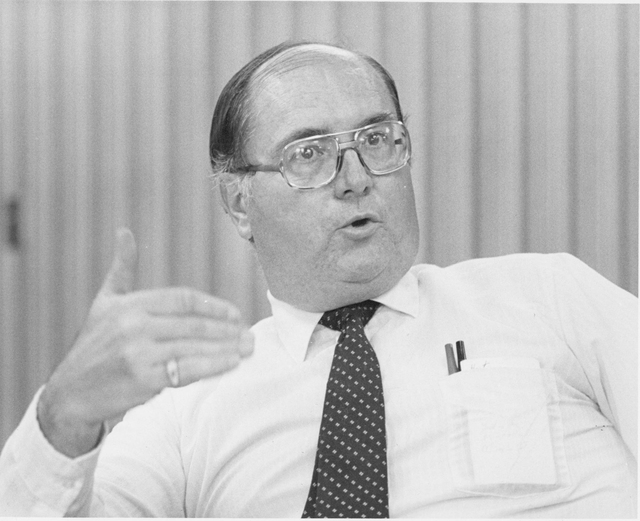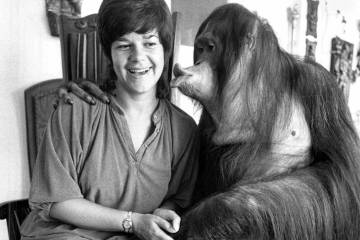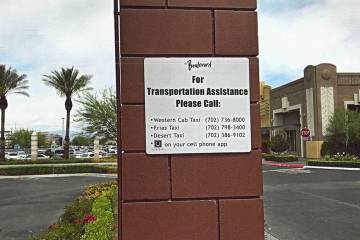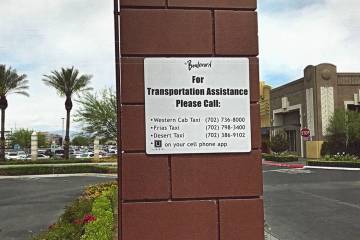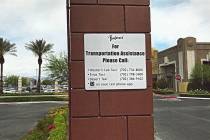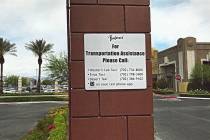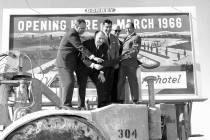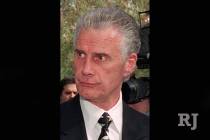Goodall accomplished much, but above all, he was a gentleman
The remembrance of “a kind and gentle man” and a “gentleman’s gentleman” was a perfect way to start the week for more than 150 people at the University of Nevada, Las Vegas.
Former UNLV President Leonard “Pat” Goodall was memorialized Monday, and a bronze of his face was revealed on the Pioneer Wall outside the Tam Alumni Center. Goodall, who died last year of cancer when he was 75, was president from 1979 to 1984, tumultuous years as well as a time of achievement. He was only the fourth UNLV president.
Goodall was one of those admirable men who kept on working at and for the university even after he was no longer president, noted current President Neal Smatresk, retired history professor Tom Wright and former Provost John Unrue.
Wright mischieveously compared Goodall, a stalwart Republican, to former Democratic President Jimmy Carter “for all he accomplished after he stepped down.” Goodall taught graduate public administration classes and tried to help in any way he could, while being careful not to offer unsolicited advice to the presidents who followed him.
Smatresk said Goodall would be happy if he could see the incoming class. “This is the largest freshman class we’ve ever had, over 3,700, and they’re far more diverse and talented.”
Goodall is remembered for many things. The Flashlight between Ham Hall and Judy Bayley Theater was installed on his watch, and despite the controversy, it draws chuckles whenever it’s mentioned as part of Goodall’s legacy. Buildings opened during the Goodall years included the 18,000 seat Thomas &Mack Center, Beam Hall and the Alta Ham Fine Arts Building.
The Barrick Lecture Series, funded by philanthropist Marjorie Barrick, began on his watch. While it lost its drawing power luster since her death, it’s still a good thing. Perhaps it’s picking up with former Disney CEO Michael Eisner’s Oct. 1 speech.
The UNLV Foundation was created at his suggestion, and last year, despite the economy, it raised $37 million to enhance the university. Naturally, after he died, his family asked that contributions be made to the foundation for the Pat Goodall Scholarship Endowment, which has raised $39,600 for student scholarships.
Little was said about Goodall’s power struggle with regents who forced him out in 1985, making way for Robert Maxson. There was no mention of students who burned him in effigy because he raised tuition, or the conflict with the NCAA over basketball Coach Jerry Tarkanian’s recruiting methods.
This was the time to remember a man of substance with a gentle way about him, a man who faced death with dignity.
Former President Carol Harter recalled asking Goodall to make a presentation to the Board of Regents to discuss alternative forms of governance for the universities and community colleges. “His recommendations weren’t often taken,” she noted dryly.
Goodall had suggested it would be wise to have regents appointed by the governor instead of having them run for election, or a mix of half and half. He also thought nine regents were preferable to the unwieldy 13 we now have.
The appointment process puts plenty of power in the governor’s hands, but it also means the regents might be people with scant education experience. Today, there are no unique standards for someone to run for regent, and over the years, some regents have demonstrated little in terms of substantive policy. Goodall presented the pros and cons evenhandedly, even though he favored having all regents appointed, just as UNR President Joe Crowley did.
His suggestion that regents be appointed instead of elected is one that was worthwhile, and too bad it was ignored.
Regents, fearful of having their own seats eliminated in the 2001 redistricting, convinced legislators more was better than less. That circumvented the long-recognized axiom that less is more.
Jane Ann Morrison’s column appears Monday, Thursday and Saturday. Email her at Jane@reviewjournal.com or call her at (702) 383-0275.



